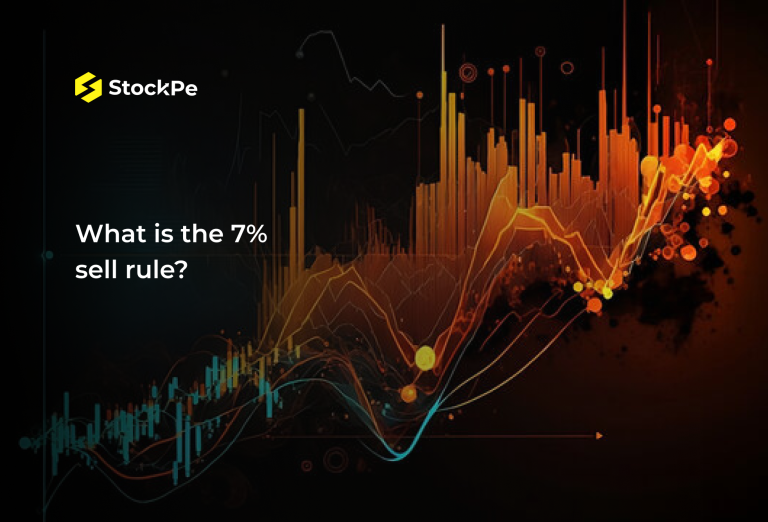The stock market is sensitive to changes in the global as well as the national level occasions. Any news regarding economic growth may lift the stock prices. Whereas, any development that is negative for the economy can reduce the capital flow.
When it comes to market fluctuations, it is not only because of a company’s performance. Instead, many wider macroeconomic factors affect overall market trends. They include GDP growth, inflation, and interest rates. Further, these trends determine the individual stock movements.
This blog includes details about the most effective macroeconomic factors and their influence on the stock market.
What are Macroeconomic Factors?
Macroeconomic factors are conditions that affect a country’s economy and may be economic, natural, or geographic. They aren’t limited to a specific sector. However, they still directly affect the market as a whole.
For example, increased taxes on a product like gold will have a bearing on certain industries. On the other hand, inflation has a direct bearing on the entire economy, from corporate earnings to the end consumer.
Macroeconomic indicators can be classified into two broad categories:
- Leading Indicators: These assist in predicting future trends in the economy and aid in policy formulation. Some examples include stock exchanges, interest rates, and bond yields.
- Lagging Indicators: These reinforce existing trends and aid in the confirmation of economic performance. Typical ones include gross domestic product, rates of inflation, and unemployment figures.
Key Macroeconomic Indicators Affecting Stocks
Let’s dive into some of the key macroeconomic factors and explore how they influence stock markets:
- Gross Domestic Product (GDP) Growth
When a country has its GDP growing, it means its economy is growing. This is associated with more investment in its stock market. The rationale for this proposition is quite straightforward – investors seek to reap gains from increasing economic activity. With the increase in demand for stocks, their price goes up.
For Example: According to the Reserve Bank of India, for FY2024-2025, India is expected to grow at a gross domestic product rate of 7% from 2024. This may strengthen investor faith in Indian equities instead of countries that are barely managing to sustain their growth.
- Inflation
Inflation makes reference to the tendency of prices to rise over time. This may have a positive or negative effect on the stock exchange. A moderate inflation rate means there is a growing economy. Whereas, a very high inflation rate means that consumers are buying less, corporations are making less money, and stock prices are down.
For Example: India has maintained a single-digit inflation rate within the target range of 2-6% provided by the RBI. This gives a positive market sentiment. However, traders should be careful since higher inflation can cause negative reactions in the market.
- Interest Rates
Interest rates are employed by central banks such as the Federal Reserve of the United States or the Reserve Bank of India to control inflation and economic growth. Higher interest rates can decrease corporate profits by raising the fund cost. This drags down the stocks.
For Example: Since the start of May 2022, the US Federal Reserve has been raising the benchmark interest rate to tackle higher inflation levels. This makes the US markets more attractive to investors. The people investing have mostly reallocated capital from emerging markets such as India to the US. This eventually affects the stock markets worldwide.
- Exchange Rates
Fluctuations in exchange rates have a strong influence on stock market performance. Funds may flow from emerging nations to the US and vice versa. This happens as per the dollar’s strength compared to the competitor currencies.
For Example: The strengthening of the US dollar caused a change in the funds flow from emerging markets including India, into the US. This was due to the rate increases by the Federal Reserve in 2022. However, economic growth in India became more stable in 2023 and the buyers regained interest in Indian stocks.
- Unemployment Rate and Jobs Report
The employment rate also has an impact on the stocks. Low unemployment levels indicate a healthy economy. In this, consumers spend more money on products, corporations record better profits and stock values rise. Investors often use job reports to predict economic movements and are also monitored.
For Example: The Bureau of Statistics in the Labor Department of the United States issues every month’s employment rate. This affects the stock market. A good number means increased investors’ confidence. Whereas, a low number warns of possible turn-offs in the economy.
- Consumer Price Index (CPI) and Producer Price Index (PPI)
The CPI measures inflation from the consumer end. In contrast, the PPI measures inflation from the producer’s end. This affects the price of consumer goods and producer goods respectively. If not controlled, inflation disturbs the purchasing power of money. And this leads to lower spending, diminishing corporate earnings, and, eventually, declining share prices.
For Example: To avoid inflation pressures, the Federal Reserve increases the interest rates. This then dampens the stock rallies. On the other hand, the decline in inflation leads to rate cuts. And this promotes market growth.
- Retail Sales
Retail values offer insights into trends and extent of consumption by consumers. Reduced per capita spending or decreased retail sales indicate the rate at which consumers are spending their money. Reduced consumer spending slows the economic rate and decreases the business profits and stock value.
For Example: In essence, a rise in retail sales is a sign of higher economic activity. This forces the investors to increase the stock prices.
- Industrial Output
While industrial output is not the sole economic indicator, it is crucial for measuring a country’s manufacturing health. An increase in industrial production indicates the expansion of the economy. On the other hand, a decline indicates a shrinking economy.
For Example: Lenders and decision-makers use industrial output to check the authenticity of other economic indicators before making changes.
- Domestic and External Political Factors
Another factor that impacts stock markets is political events at the national and global levels. Political stability increases investors’ confidence. Whereas, change in political powers leads to increased risks of market fluctuations.
Also, the changes in fiscal or monetary policy show how information can help the government influence market reactions immediately.
For Example: When there is uncertainty in the political environment like during the election period, people might refrain from investment. On the other hand, pro-market reforms improve the overall market and cause stock prices to rise.
Importance of Monitoring Macroeconomic Indicators
It is essential to monitor macroeconomic indicators due to their influence on the financial markets for investors and traders. Parameters like crude oil prices, GST, and electricity usage give a live update of how the economy is doing.
Investment strategies based on economic phases:
- During Economic Expansion: Traders may rotate their trades to new momentum stocks that often experience high liquidity and flows.
- During Economic Recovery: Value stocks emerging from a low point in the economic cycle are appealing to long-term investors.
- During Low Growth and Interest Rates: Shareholders may chase quality businesses with reliable revenues.
With these indicators, investors cannot only invest in growing phases but also avoid losing money in potentially dangerous phases.
Final Words
Recognizing and analyzing macroeconomic factors is essential for informed investment choices. Although it is easy to act as per the advisers, it’s more essential to gain knowledge about the factors affecting the stock market. Investors must track these factors to stay informed and create a sound investment portfolio.
Frequently Asked Questions
1. What are other macroeconomic factors that influence stock markets?
Other factors include the price of gold, global markets, and corporate results.
2. Is it relevant for retail investors to focus on monitoring macroeconomic factors?
Yes. The macroeconomic factors must also be considered by retail investors. This applies when they are designing or redesigning their portfolios for other market conditions.
3. What does an increase in gold prices mean for the stock exchange?
Gold and stocks have an inverse correlation. This means when the price of gold increases, it is accompanied by a weak stock market.
4. Is it more beneficial to have a short-term or long-term perspective when looking at macroeconomic factors?
Both approaches can work. While short-term investors would relish volatility, long-term investors look forward to overall market growth.





